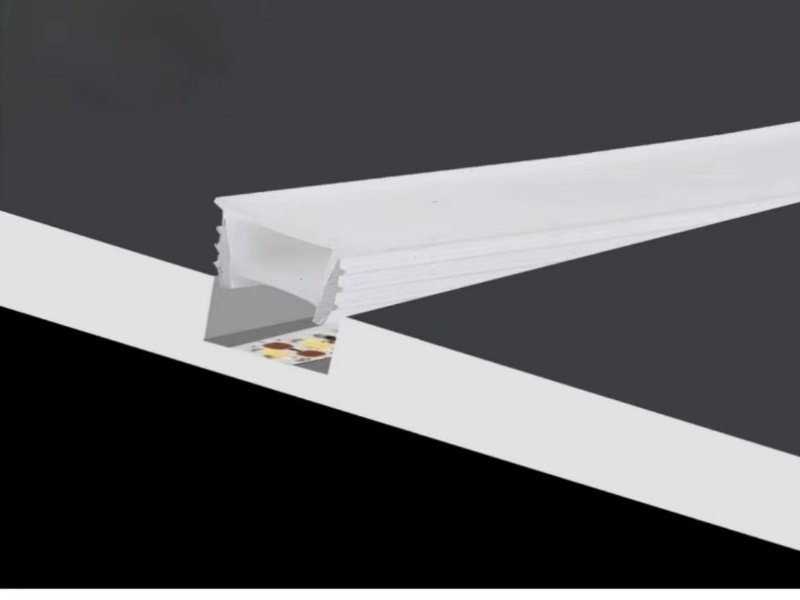1.What is Flexible LED Channel?
Flexible LED channels are an innovative solution that adds both style and functionality to LED lighting installations. These LED strip channels, also known as tracks or extrusions, play a crucial role in supporting and protecting flexible LED strips while enhancing the overall aesthetics of the lighting application.
2.What material is used for flexible LED channel track?
Flexible LED diffuser channel tracks are crucial components in ensuring the stability, protection, and aesthetic appeal of LED strip installations. Two commonly used materials for these tracks are silicon and aluminum.
2.1. Silicon Flexible LED Channels:
Silicon is a versatile and resilient material for LED channel tracks. Its flexibility allows for easy bending and shaping, making it ideal for installations in curved or irregular spaces. The softness of silicon provides a protective layer around the LED strips, shielding them from dust, moisture, and other environmental factors. This material is particularly suitable for applications where a seamless and inconspicuous look is desired, as silicon channels often have a translucent appearance that blends well with various surfaces.
2.2. Aluminum Flexible LED Channels:
Aluminum is a robust and durable material widely used for LED channel tracks. Its excellent heat dissipation properties make it ideal for applications where managing heat is crucial for the longevity and optimal performance of LED strips. Aluminum LED channel diffuser offer structural support and protection to the LED strips while maintaining a sleek and modern appearance. Additionally, aluminum channels often come with various finishes, providing customization options to match different design preferences.

3. Can Flexible LED Channel be Cut?
One of the standout features of flexible LED strip channel is their adaptability to different installation requirements.
Yes, flexible LED channels can be cut to fit specific lengths. This flexibility in size customization allows for seamless integration into diverse spaces, whether it’s accent lighting in residential areas or functional lighting in commercial environments.
4.How do you install flexible LED channel diffuser for strip light?
4.1.Preparation:
Gather all necessary materials, including flexible LED channels, LED strips, end caps, connectors, mounting clips, and any tools required.
4.2.LED Strips Insertion:
Carefully place the LED strips into the channel, ensuring proper alignment. Some channels come with diffuser covers for even light distribution.
4.3.Connecting LED Strips:
If your setup requires multiple segments, use connectors to seamlessly link the LED strips. Follow the manufacturer’s instructions for the specific connector type.
4.4.Mounting the Channel:
Secure the channel in place using mounting clips, adhesive backing, screws, or other recommended methods based on your installation surface.
4.5.Wiring and Power Connection:
Organize the wiring within the channel and connect the LED strips to the power source, adhering to the correct polarity to avoid functionality issues.
4.6.Testing:
Before finalizing the installation, test the LED strips to ensure they are working correctly. This step allows you to identify and address any potential issues.

Conclusion:
In conclusion, flexible LED channels LED profile serve as integral components in optimizing the performance and appearance of LED lighting installations. The choice between aluminum and PVC channels depends on specific project requirements, while the ability to cut and customize these channels adds a layer of adaptability that enhances their usability across various applications. As lighting design continues to evolve, flexible LED channels prove to be a versatile solution, marrying form and function for a visually stunning and efficient lighting experience.












Leave A Comment